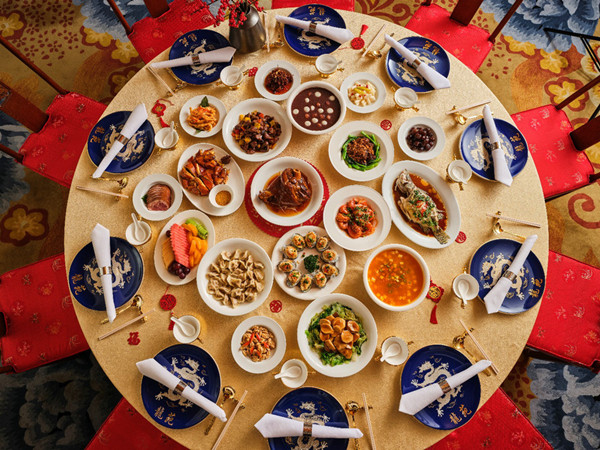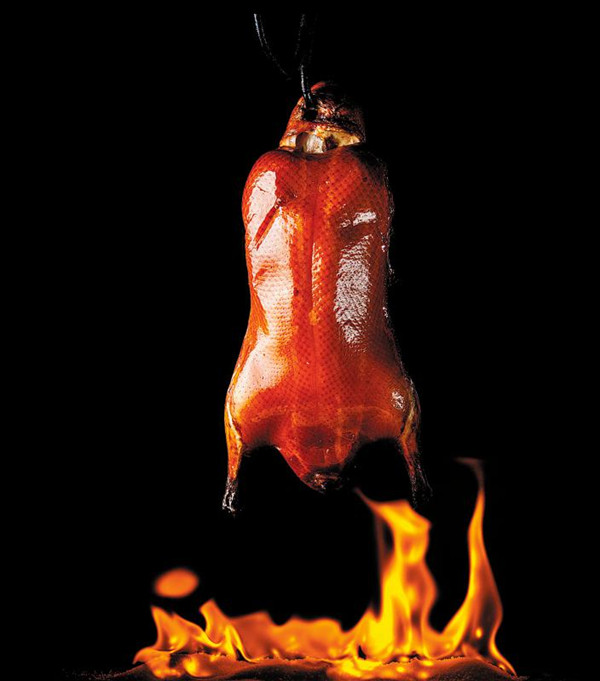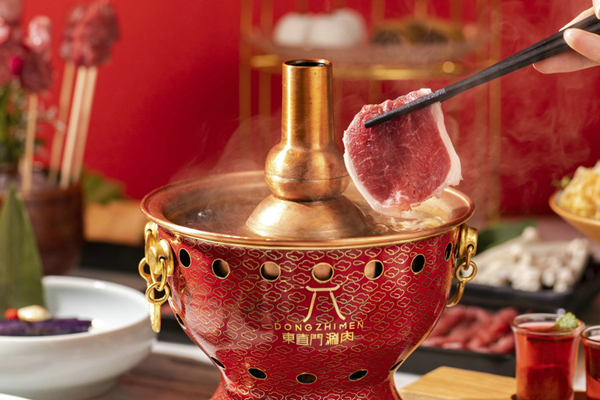Ten essential cooking verbs in Chinese

There are a lot of different ways of preparing food in Chinese cuisine. Whether you're quickly stir-frying a meal or slowly braising a complex dish, understanding the key cooking verbs is essential for mastering the Chinese cooking vocabulary.
Here's a guide to some common Chinese cooking verbs and how they're used in recipes.
01. To bake/roast

In Chinese cuisine, the term 烤 (kǎo) refers to roasting and baking techniques, both of which use dry heat to cook food.
烤
kǎo
to roast
Iconic dishes
(北京) 烤鸭
(běi jīng) kǎo yā
(Peking) roast duck
Peking duck is seasoned, air-dried and roasted until the skin is crispy and golden brown.
月饼
yuè bǐng
mooncake
Mooncakes come in various flavors, including lotus seed paste, red bean paste and salted egg yolk.
02. To stir-fry
Stir-frying, a popular Chinese cooking technique, involves quickly cooking ingredients in a small amount of oil over high heat.
炒
chǎo
to stir-fry
Iconic dish
炒饭
chǎo fàn
fried rice
Fried rice involves stir-frying cooked rice with various ingredients such as vegetables, eggs, meat and seasonings.
03. To deep fry
炸 (zhá) or deep-frying, is a popular cooking technique in Chinese cuisine that creates dishes with a crispy, golden exterior and a tender interior.
炸
zhá
to deep fry

Iconic dish
炸春卷
zhá chūn juǎn
fried spring rolls
Spring rolls are a popular appetizer made with thin pastry wrappers filled with a mixture of vegetables, meat, or seafood, then deep-fried until golden and crispy.
04. To boil
Boiling involves cooking food in a liquid, typically water or broth, at or near its boiling point. This technique is used to cook a wide range of ingredients, from vegetables and meat to noodles and dumplings.
煮
zhǔ
to boil

Iconic dishes
火锅
huǒ guō
hot pot
A popular Chinese dining experience where diners cook a variety of ingredients in a communal pot of boiling broth at the table.
茶叶蛋
chá yè dàn
tea egg
A tea egg is a boiled egg that is cracked slightly and then boiled again in a mixture of tea, sauce and spices. It's known as a marble egg due to the shell's cracked, marble-like appearance.
05. To steam
蒸 (zhēng) is a cooking technique where food is placed in a steamer basket over boiling water, allowing the steam to gently cook it.
蒸
zhēng
to steam
Iconic dish
小笼包
xiǎo lóng bāo
steamed dumpling
小笼包 (xiǎo lóng bāo), or soup dumplings, are known for their delicate wrappers, flavorful fillings and for piping-hot soup inside. Nanxiang, a quaint town in Shanghai's Jiading district, is renowned as the birthplace of the original xiaolongbao. Celebrated for its delicate form and exceptional flavor, Nanxiang xiaolongbao has become an iconic dish in the Shanghai cuisine.
06. To pan-fry
Pan-frying is a popular Chinese cooking technique that involves cooking food in a small amount of oil over medium to high heat in a pan.
煎
jiān
to pan-fry
Iconic dish
煎饼
jiān bǐng
jianbing, a savory Chinese crêpe
Chinese savory pancakes are a beloved Chinese street food and breakfast item, they are made from a thin batter that is spread over a griddle and cooked until golden brown.
07. To stew
Braising (炖, dùn) involves simmering ingredients in a covered pot with liquid, which can be water, broth or sauce. This technique is used to cook tougher cuts of meat, or root vegetables, transforming them into tender, flavorful dishes.
炖
dùn
to stew
Iconic dish
红烧牛肉面
hóng shāo niú ròu miàn
braised beef noodles
Classic Chinese dish featuring chunks of pork belly braised in a savory-sweet sauce made from soy sauce, sugar, rice wine and aromatic spices.
08. To marinate
In Chinese culture, pickling or marinating preserved vegetables by soaking them in seasoned liquid. This method enhances the flavor and tenderizes the ingredients, making them more enjoyable to eat.
腌
yān
to marinate
Iconic dish
腌黄瓜
yān huáng guā
pickled cucumbers
This tangy, crunchy and refreshing snack is not only easy to prepare but also versatile – making it a favorite in many households.
09. To cold toss
凉拌 (liáng bàn), or cold tossing, is a refreshing and flavorful technique in Chinese cuisine used to prepare salads and cold dishes. This method involves mixing raw or lightly cooked ingredients with various seasonings.
凉拌
liáng bàn
to cold toss
Iconic dish
凉拌面
liáng bàn miàn
cold noodles
Noodles tossed with vegetables, peanuts and a tangy, spicy sauce.
10. To season/flavor
调味 (tiáo wèi), or seasoning can be done at various stages of cooking, from marinating ingredients to adding final touches before serving.
调味
tiáo wèi
to season
Here are some frequently used seasonings and spices in Chinese cuisine:
姜 (jiāng) · ginger
蒜 (suàn) · garlic
醋 (cù) · vinegar
酱油 (jiàng yóu) · soy sauce
海鲜酱 (hǎi xiān jiàng) · hoisin sauce
芝麻油 (zhī ma yóu) · sesame oil
五香粉 (wǔ xiāng fěn) · five-spice powder
Source: That's Mandarin

